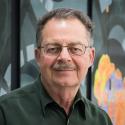
Computational Science
Our History
The U.S. Department of Energy’s (DOE) Argonne National Laboratory has formed two new research divisions to focus its lab-wide foundational expertise on computational science and data science activities.
The new units, the Computational Science Division (CPS), led by Division Director Salman Habib, and the Data Science and Learning Division (DSL), led by Argonne Distinguished Fellow Ian Foster, are part of Argonne’s overall advanced computing strategy to enhance lab-wide, cross-cutting capabilities to enable new scientific knowledge and insight in a wide range of disciplines. When originally launched, the CPS was led by Argonne Distinguished Fellow Paul Messina, who now acts as an Argonne associate and special consultant.
The new divisions join Argonne’s Directorate for Computing, Environment and Life Sciences, growing the directorate to four computing divisions in all, with the Argonne Leadership Computing Facility (ALCF), a DOE Office of Science User Facility, providing world-leading capability, and the Mathematics and Computer Science (MCS) division refocusing its efforts to supporting long-term fundamental research.
Argonne has a long history in the field of advanced computing. Its parallel computing program dates back to the early 1980s, nearly 10 years before computational science was broadly recognized as a new paradigm for scientific investigation. This new effort continues that tradition by laying the foundation for Argonne’s computing ecosystem, which will include exascale capabilities in 2021.
Both units bring together experts from across the laboratory to work collaboratively on a wide range of multi-disciplinary projects. Argonne is home to hundreds of computational scientists and domain scientists who pursue a rich and varied collection of applications spanning all directorates and divisions. The new divisions will serve as interdisciplinary activity centers for next-generation programs and projects.

